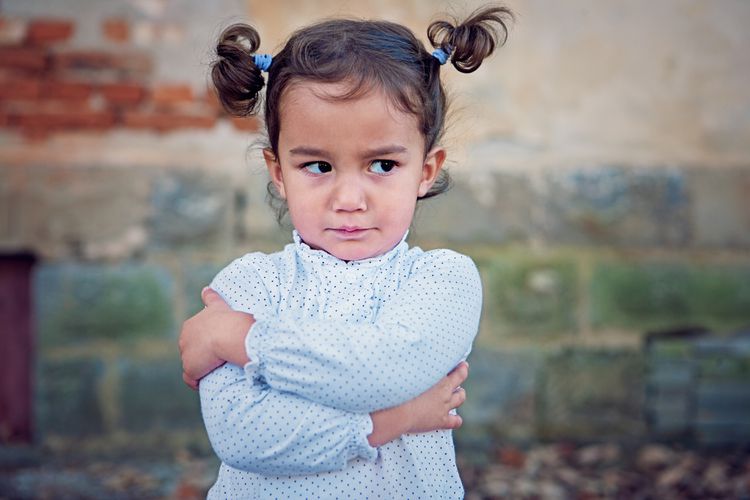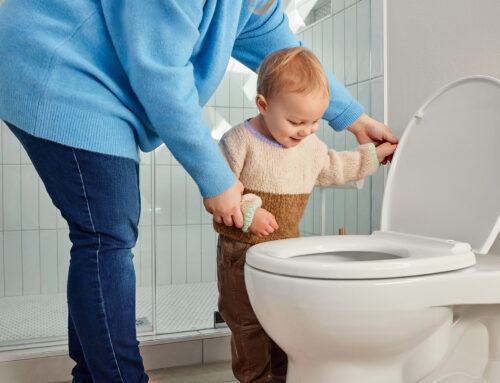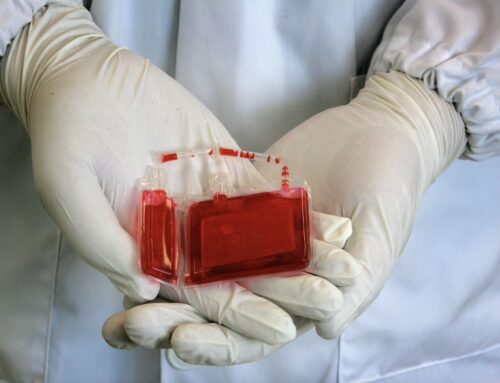Children’s Health
Here are some of the most common childhood diseases and disorders:
How are children treated for colds and the flu?
The treatment for colds and flu in children focuses on relieving symptoms and supporting the child’s immune system. It’s important to note that antibiotics are not effective against viruses like those that cause the common cold or flu. Treatment options may include:
- Rest: Encourage your child to rest to help their body recover.
- Fluids: Make sure your child drinks plenty of fluids, such as water, clear broth, or oral rehydration solutions, to prevent dehydration.
- Humidifier: Using a humidifier in your child’s room can help relieve congestion and cough.
- Saline nasal drops: Saline nasal drops can help loosen mucus and relieve nasal congestion, especially in infants.
- Acetaminophen or ibuprofen: These over-the-counter medications can help reduce fever and relieve pain. Follow the dosing instructions carefully and consult a healthcare provider before giving any medication to a child.
- Cough syrups: Some over-the-counter cough syrups may help relieve cough symptoms. However, these should not be given to children under the age of 6, and only under the guidance of a healthcare provider.
- Antiviral medications: In some cases, antiviral medications such as oseltamivir (Tamiflu) may be prescribed for the flu, especially in children who are at high risk of complications.
- Warm liquids: Warm liquids like soup, herbal tea, or warm water with honey and lemon can help soothe a sore throat and provide comfort.
It’s important to monitor your child’s symptoms and seek medical attention if they worsen or if your child develops severe symptoms, such as difficulty breathing, persistent high fever, or signs of dehydration. It’s also important to follow your healthcare provider’s advice regarding treatment and when to seek medical care.
How are children treated for ear infections?
Treatment for ear infections in children depends on the type of infection and the severity of symptoms. In many cases, ear infections will resolve on their own without the need for antibiotics. However, if the infection is bacterial or if symptoms are severe, treatment options may include:
- Antibiotics: If the ear infection is bacterial, your child’s healthcare provider may prescribe antibiotics. It’s important to give the full course of antibiotics as prescribed, even if your child’s symptoms improve.
- Pain relievers: Over-the-counter pain relievers such as acetaminophen (Tylenol) or ibuprofen (Advil, Motrin) can help relieve ear pain and reduce fever. Follow the dosing instructions carefully and consult your child’s healthcare provider before giving any medication.
- Ear drops: Ear drops containing a numbing agent or a combination of antibiotics and steroids may be prescribed to help relieve pain and inflammation.
- Warm compress: Applying a warm compress to the ear can help relieve pain and discomfort.
- Tympanostomy tubes: In some cases, especially if a child has recurrent ear infections or persistent fluid in the middle ear, tympanostomy tubes (ear tubes) may be recommended. These tubes help ventilate the middle ear and prevent fluid buildup.
- Observation: For mild ear infections or in cases where the infection is likely to resolve on its own, your child’s healthcare provider may recommend a “wait and see” approach, with close monitoring of symptoms.
It’s important to follow your child’s healthcare provider’s advice regarding treatment and follow-up care. If your child’s symptoms worsen or do not improve with treatment, seek medical attention promptly.
How are children treated for strep throat?
Strep throat is a bacterial infection caused by the Streptococcus pyogenes bacteria. Treatment for strep throat in children usually involves antibiotics to kill the bacteria and reduce the risk of complications. Treatment options may include:
- Antibiotics: The most common treatment for strep throat is a course of antibiotics, such as penicillin or amoxicillin. These antibiotics are usually taken for 10 days to fully eradicate the bacteria.
- Pain relievers: Over-the-counter pain relievers such as acetaminophen (Tylenol) or ibuprofen (Advil, Motrin) can help relieve throat pain and reduce fever. Follow the dosing instructions carefully and consult your child’s healthcare provider before giving any medication.
- Throat lozenges or sprays: Throat lozenges or sprays containing numbing agents can help relieve throat pain.
- Fluids and rest: Encourage your child to drink plenty of fluids and get plenty of rest to help their body recover.
- Warm saltwater gargle: Gargling with warm saltwater can help soothe a sore throat.
It’s important to complete the full course of antibiotics prescribed by your child’s healthcare provider, even if your child’s symptoms improve. This helps ensure that the bacteria are fully eradicated and reduces the risk of complications. If your child’s symptoms worsen or do not improve with treatment, seek medical attention promptly.
How are children treated for chickenpox?
Treatment for chickenpox in children focuses on relieving symptoms and preventing complications. Chickenpox is caused by the varicella-zoster virus and typically resolves on its own without specific antiviral medication. Treatment options may include:
- Antihistamines: Antihistamines can help relieve itching. They are especially useful at night to help children sleep.
- Acetaminophen or ibuprofen: These over-the-counter medications can help reduce fever and relieve pain. Follow the dosing instructions carefully and consult your child’s healthcare provider before giving any medication.
- Cool baths: Taking cool baths with baking soda or colloidal oatmeal can help relieve itching and soothe the skin.
- Calamine lotion: Applying calamine lotion to the skin can help relieve itching and dry out the blisters.
- Antiviral medication: In some cases, antiviral medication may be prescribed for children with severe chickenpox or those at high risk of complications. Antiviral medication is most effective when started within the first 24 hours of the rash appearing.
It’s important to keep your child hydrated and ensure they get plenty of rest. Avoid giving aspirin to children with chickenpox, as it can increase the risk of Reye’s syndrome, a rare but serious condition that can affect the liver and brain. It’s also important to keep your child home from school or daycare until all the blisters have crusted over to prevent spreading the virus to others.
How are children treated for measles?
There is no specific antiviral treatment for measles, so treatment focuses on relieving symptoms and supporting the child’s immune system. Treatment options for measles in children may include:
- Rest: Encourage your child to rest to help their body recover.
- Fluids: Make sure your child drinks plenty of fluids, such as water, clear broth, or oral rehydration solutions, to prevent dehydration.
- Fever reducers: Over-the-counter fever reducers such as acetaminophen (Tylenol) or ibuprofen (Advil, Motrin) can help reduce fever and relieve discomfort. Follow the dosing instructions carefully and consult your child’s healthcare provider before giving any medication.
- Vitamin A: Some studies suggest that vitamin A supplementation can help reduce the severity of measles and decrease the risk of complications, especially in children with vitamin A deficiency.
- Humidifier: Using a humidifier in your child’s room can help relieve cough and congestion.
- Isolation: Keep your child isolated from others, especially those who are unvaccinated or at high risk of complications from measles, to prevent the spread of the virus.
It’s important to monitor your child’s symptoms and seek medical attention if they worsen or if your child develops severe symptoms, such as difficulty breathing, persistent high fever, or signs of dehydration. If your child has not been vaccinated against measles, talk to their healthcare provider about the measles, mumps, and rubella (MMR) vaccine, which is highly effective at preventing measles.
How are children treated for asthma?
Treatment for asthma in children aims to control symptoms, prevent asthma attacks, and minimize the need for quick-relief medications. Treatment options may include:
- Inhaled corticosteroids: These are the most effective long-term control medications for asthma. They reduce inflammation in the airways and help prevent asthma symptoms. Examples include fluticasone (Flovent), budesonide (Pulmicort), and beclomethasone (Qvar).
- Long-acting beta-agonists (LABAs): These medications help relax the muscles around the airways, making it easier to breathe. They are often used in combination with inhaled corticosteroids. Examples include salmeterol (Serevent) and formoterol (Foradil).
- Leukotriene modifiers: These medications block the action of leukotrienes, substances in the body that can cause asthma symptoms. Examples include montelukast (Singulair) and zafirlukast (Accolate).
- Quick-relief medications (rescue inhalers): These medications provide immediate relief of asthma symptoms by relaxing the muscles around the airways. Examples include albuterol (ProAir, Ventolin) and levalbuterol (Xopenex).
- Allergy medications: If allergies trigger your child’s asthma, allergy medications such as antihistamines or nasal corticosteroids may be recommended to help control allergy symptoms.
- Allergy shots (immunotherapy): In some cases, allergy shots may be recommended to help reduce your child’s sensitivity to specific allergens that trigger asthma symptoms.
- Biologic therapies: For severe asthma that does not respond to other treatments, biologic therapies may be used. These medications target specific pathways in the immune system that are involved in asthma.
It’s important for children with asthma to have a written asthma action plan developed with their healthcare provider. This plan outlines when to take medications, how to monitor symptoms, and when to seek emergency care. Regular follow-up visits with a healthcare provider are also important to monitor asthma control and adjust treatment as needed.
How are children treated for allergies?
Treatment for allergies in children depends on the type and severity of the allergies. Common treatment options may include:
- Avoidance: The first step in managing allergies is to avoid exposure to the allergen, if possible. For example, if a child is allergic to pollen, they may need to stay indoors during peak pollen seasons.
- Antihistamines: These medications can help relieve itching, sneezing, and runny nose caused by allergies. They are available over-the-counter and by prescription.
- Nasal corticosteroids: These medications can help reduce inflammation in the nasal passages and relieve symptoms such as nasal congestion and sneezing. They are available by prescription and are often used as a first-line treatment for allergic rhinitis.
- Decongestants: These medications can help reduce nasal congestion, but they should be used with caution and only for short periods, as they can cause rebound congestion if used for too long.
- Allergy shots (immunotherapy): Allergy shots may be recommended for children with severe allergies that do not respond to other treatments. Allergy shots work by gradually desensitizing the immune system to allergens, reducing the severity of allergic reactions over time.
- Allergy medications: Depending on the type of allergy, other medications such as eye drops or asthma medications may be prescribed to help control symptoms.
- Emergency epinephrine: Children with severe allergies, such as those with a history of anaphylaxis, may need to carry emergency epinephrine (EpiPen) to use in case of a severe allergic reaction.
It’s important for children with allergies to work closely with their healthcare provider to develop an allergy management plan that includes appropriate medications, avoidance strategies, and emergency measures in case of a severe allergic reaction. Regular follow-up visits with a healthcare provider are also important to monitor allergy symptoms and adjust treatment as needed.
How are children treated for ADHD?
Treatment for attention-deficit/hyperactivity disorder (ADHD) in children typically involves a combination of behavioral therapy, medication, and education and support. The specific treatment plan will depend on the child’s age, symptoms, and individual needs. Common treatment options for ADHD in children include:
- Behavioral therapy: Behavioral therapy, such as parent training and behavioral interventions, can help children with ADHD learn new behaviors and develop coping strategies. This type of therapy focuses on positive reinforcement and teaches children how to manage their behavior and improve their social skills.
- Medication: Stimulant medications such as methylphenidate (Ritalin, Concerta) and amphetamine (Adderall, Vyvanse) are often used to treat ADHD. These medications can help improve attention, focus, and impulse control. Non-stimulant medications such as atomoxetine (Strattera) may also be used, especially in children who do not respond to stimulant medications or who cannot tolerate them.
- Education and support: Providing education and support to children with ADHD and their families can help them better understand the condition and learn how to manage symptoms. This may include working with teachers and school staff to create a supportive environment for the child.
- Parent training: Parent training programs can help parents learn how to manage their child’s behavior and provide support and structure at home.
- School support: Schools can provide accommodations and support for children with ADHD, such as extra time on tests, preferential seating, and behavioral interventions.
- Exercise and healthy lifestyle habits: Regular physical activity and a healthy diet can help children with ADHD manage their symptoms and improve their overall well-being.
It’s important for children with ADHD to receive a comprehensive evaluation and treatment plan tailored to their specific needs. Regular follow-up visits with a healthcare provider are also important to monitor progress and adjust treatment as needed.
How are children treated for autism spectrum disorder?
Treatment for autism spectrum disorder (ASD) in children is tailored to the individual needs of the child and typically involves a combination of behavioral therapy, educational interventions, and support services. The goal of treatment is to help children with ASD develop their full potential and improve their quality of life. Common treatment options for ASD in children include:
- Behavioral therapy: Behavioral therapy, such as applied behavior analysis (ABA), is often used to help children with ASD develop social, communication, and behavioral skills. ABA therapy is typically provided in a one-on-one setting and focuses on positive reinforcement to encourage desired behaviors.
- Speech therapy: Speech therapy can help children with ASD improve their communication skills, including speech, language, and social communication. Speech therapists can also help children learn alternative forms of communication, such as sign language or picture communication systems.
- Occupational therapy: Occupational therapy can help children with ASD develop fine motor skills, sensory processing skills, and daily living skills. Occupational therapists can also help children learn how to regulate their emotions and manage sensory sensitivities.
- Educational interventions: Children with ASD often benefit from specialized educational programs that address their unique learning needs. These programs may include individualized education plans (IEPs) and accommodations to help children succeed in school.
- Medication: In some cases, medication may be used to manage symptoms associated with ASD, such as hyperactivity, aggression, or anxiety. Commonly prescribed medications include antidepressants, antipsychotics, and stimulants.
- Parent training and support: Parents of children with ASD can benefit from training and support to help them better understand their child’s condition and learn effective strategies for managing challenging behaviors and promoting development.
- Support services: Children with ASD and their families may benefit from support services such as counseling, support groups, and respite care to help them cope with the challenges of living with ASD.
It’s important for children with ASD to receive early and comprehensive treatment tailored to their specific needs. A multidisciplinary approach involving healthcare providers, therapists, educators, and other professionals is often recommended to provide the best possible care for children with ASD.
How are children treated for childhood obesity?
Treatment for childhood obesity typically involves a combination of lifestyle changes, behavioral interventions, and support from healthcare providers. The goal of treatment is to help children achieve and maintain a healthy weight while promoting overall health and well-being. Common treatment options for childhood obesity include:
- Dietary changes: Encouraging children to eat a healthy, balanced diet rich in fruits, vegetables, whole grains, and lean proteins can help them manage their weight. Limiting sugary drinks and high-calorie snacks can also be beneficial.
- Physical activity: Encouraging children to be physically active for at least 60 minutes a day can help them maintain a healthy weight. Activities such as walking, biking, swimming, and playing sports can be fun ways for children to stay active.
- Behavioral interventions: Behavioral interventions, such as setting realistic goals, keeping track of food intake and physical activity, and rewarding positive behaviors, can help children develop healthy habits and make lasting lifestyle changes.
- Family involvement: Involving the whole family in lifestyle changes can help create a supportive environment for the child. Parents can serve as role models by eating healthy foods and being physically active with their children.
- Healthcare provider support: Healthcare providers can provide guidance and support to help children and families make healthy choices. They can also help identify and address any underlying medical or psychological issues that may be contributing to obesity.
- Counseling: In some cases, counseling may be recommended to help children and families address emotional or behavioral issues related to food and eating.
- Medication: In some cases, medication may be prescribed to help manage weight-related health conditions or to support weight loss efforts. However, medication is typically only used in combination with lifestyle changes and under the supervision of a healthcare provider.
It’s important for children with obesity to receive ongoing support and monitoring to help them maintain a healthy weight and reduce their risk of developing weight-related health problems. A multidisciplinary approach involving healthcare providers, dietitians, psychologists, and other professionals is often recommended to provide comprehensive care for children with obesity.
Summary of Childhood Disorders
- Colds and flu – Viral respiratory infections that are very common in children and can cause symptoms like runny nose, cough, and fever.
- Ear infections – Bacterial or viral infections in the middle ear that can cause pain, fever, and hearing problems.
- Strep throat – A bacterial infection causing a sore, red throat, fever, and swollen lymph nodes.
- Chickenpox – A highly contagious viral disease characterized by an itchy rash and fluid-filled blisters.
- Measles – A highly contagious viral illness causing a red rash, fever, and cold-like symptoms.
- Asthma – A chronic lung condition that can cause wheezing, coughing, and difficulty breathing.
- Allergies – Immune system overreactions to harmless environmental triggers like pollen, dust, or certain foods.
- Attention Deficit Hyperactivity Disorder (ADHD) – A neurodevelopmental disorder causing inattention, hyperactivity, and impulsivity.
- Autism Spectrum Disorder (ASD) – A range of neurodevelopmental conditions affecting social skills, communication, and behavior.
- Childhood obesity – Excessive weight gain and body fat that can lead to health problems like type 2 diabetes.
Many of these conditions are very common and treatable, especially when caught early. Prompt medical care and disease management are important for supporting children’s health and development.




